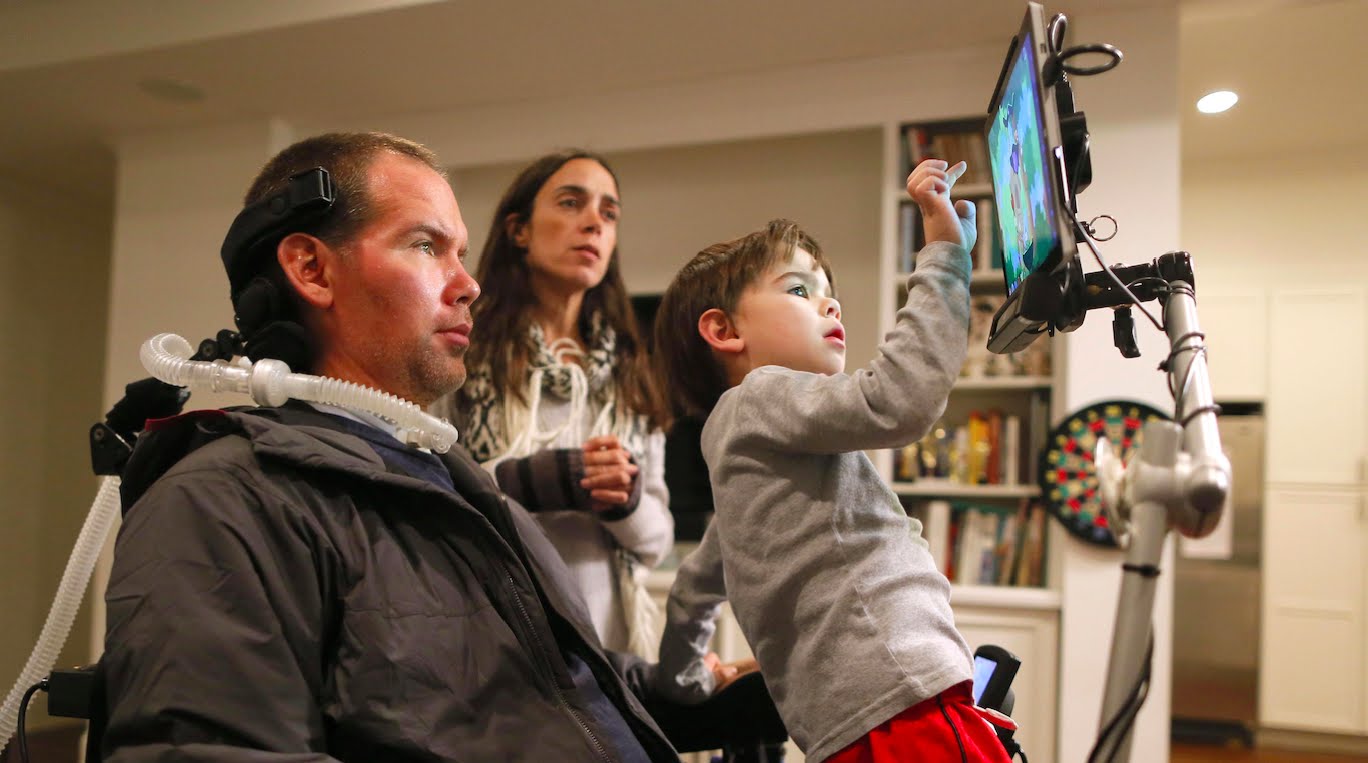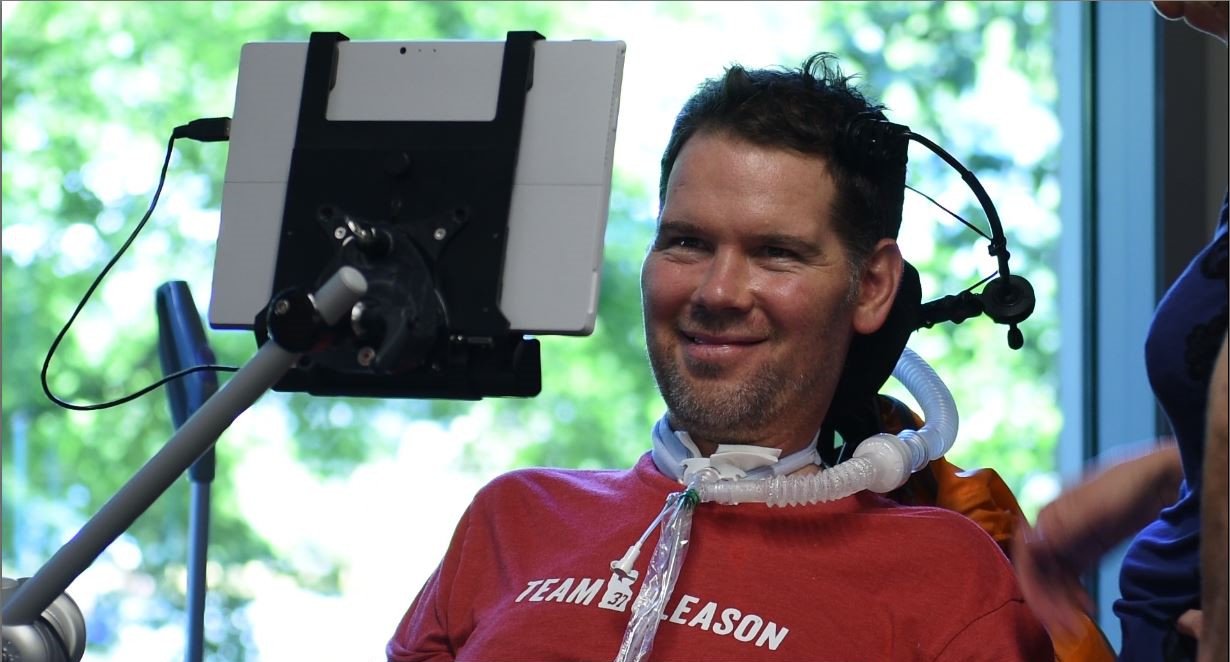How Microsoft used tech to help people with ALS regain mobility
Every year approximately 6,000 people are diagnosed with the immobilizing disease Amyotrophic Lateral Sclerosis (ALS). Microsoft wants to give them and other mobility-challenged individuals the technology to regain some of their lost autonomy.

ALS, or Lou Gehrig's Disease, is a progressive neurological disease that affects the nerve cells responsible for controlling voluntary muscle movement. It robs a person of the ability to walk, use their limbs, talk and even breathe independently.
Individuals with the disease not only lose their mobility but their sense of "self" is challenged. Total dependence upon others erodes their sense of autonomy.
Technology that can return a level of freedom to people with ALS and others who use wheelchairs is liberating for those who often feel trapped in their own bodies. Former football star Steve Gleason was diagnosed with ALS shortly before the birth of his son. In an effort to be the father he wanted to be, Gleason reached out to Microsoft for help.
- How fathering a son with disabilities helped Microsoft's CEO transform the company
- Microsoft's Autism Hiring Program aims to attract diverse talent
- How Microsoft's inclusion mission is helping the blind to 'see'
- How Microsoft is helping deaf people 'hear'
Microsoft embraced the challenge
In a belief that Microsoft had the talent, technology and will to help him, Gleason sent the company an email:
I want to be able to move my wheelchair, I want to be independent, I want to be able to have great conversations with my kiddo.
He felt that people like himself should be able to drive their wheelchairs with their eyes. In response to his email, a team of innovators embraced the challenge, and during a one-week 2014 hackathon event, the team committed to making Gleason's dream for himself and others a reality.
Becoming mobile

By the end of the event, the team had a crude but functional solution using eye-tracking technology and additional components that allowed Gleason to move his wheelchair with his eyes. After seeing the impact of the technology, the team was encouraged to go further.
Microsoft Chief Accessibility Officer Jenny Lay-Flurrie said:
All the latest news, reviews, and guides for Windows and Xbox diehards.
We did not want it to be the end of the hackathon, at all. By then we had all vehemently fallen in love with Steve and his family. We wanted to continue this project.
The team garnered the necessary resources, iterated on the tech, and in April 2015 Gleason's wheelchair was outfitted with a more refined version of the eye-tracking and wheelchair navigation tech.
Gleason felt that people like him should be able to move their wheelchairs with their eyes.
Microsoft's innovative technology empowered Gleason to navigate his chair independently and to play with his son.
Microsoft now wants to take this technology to a much broader audience that can also benefit from it. Though Microsoft is "working against the clock" and many of the people with ALS they worked with have died, Gleason's case stands out as a ray of hope and a point of origin for technology that will potentially help millions.
Microsoft's eye-tracking technology
The eye-tracking technology that helped Gleason is now part of Windows 10. Users with varying degrees of mobility can navigate Windows 10 using just their eyes and can even type an entire article using the technology. The inclusion of this technology as a basic function of the OS is core to Microsoft's mission of inclusive design or thinking of all users from the beginning of the design process.
Microsoft is serious about bringing diversity to its products and its teams through a mission of inclusion.
Microsoft's holistic approach to inclusion
Jessica Rafuse is a program manager for accessibility, and she enjoyed watching Microsoft's inclusion efforts from afar before joining the company. As a person who uses a wheelchair, she understands the challenges facing those with limited mobility.
Rafuse champions Microsoft's inclusivity and accessibility missions and is also helping to bring other talented people with disabilities into the organization. Through its products, hiring practices and inspiring technological efforts, such as those that yielded the eye-tracking that helped Steve Gleason and now millions of others, Microsoft's inclusivity efforts are holistic.
This mission begins with empathy and focuses on individuals and their abilities rather than defining people based on the challenges they face.
How fathering a son with disabilities helped Microsoft's CEO transform the company
What we can accomplish with technology is amazing when we care about others and work together to empower one another.

Jason L Ward is a Former Columnist at Windows Central. He provided a unique big picture analysis of the complex world of Microsoft. Jason takes the small clues and gives you an insightful big picture perspective through storytelling that you won't find *anywhere* else. Seriously, this dude thinks outside the box. Follow him on Twitter at @JLTechWord. He's doing the "write" thing!


